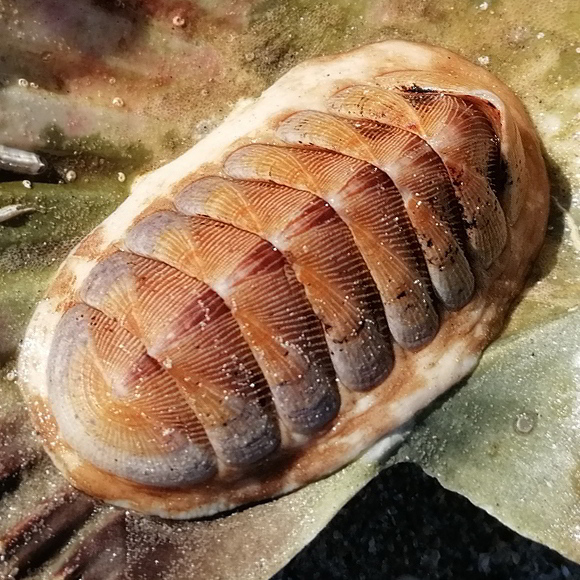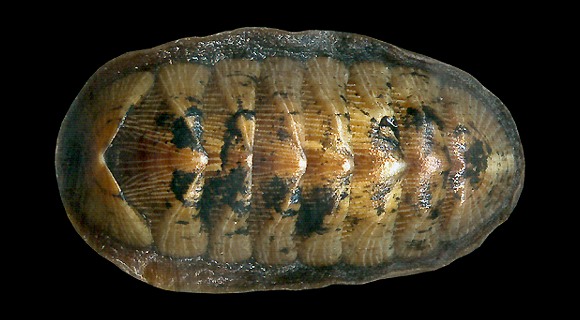
Rio de Janeiro to Cape Horn, Cantabrian coast to Alborán sea. On rock, stones, octopus catchpots, dead shells, boats hulls… from shallow water to circa 50m deep. According to Kaas & Van Belle (Monograph of Living Chitons, Leiden 1987),the species would have originated from South America, crossing the ocean with « Spanish and Portuguese trade vessels which for centuries maintained a frequent traffic between their countries and Latin America ». Grazer, also barnacle-eater.
Basionym: Chiton angulatus. Synonyms: ferrugineus, fulvus, lividus, lusitanicus, tehuelcus, velatus…
25m deep on stones, Málaga, Andalucia, S. Spain. 37mm.
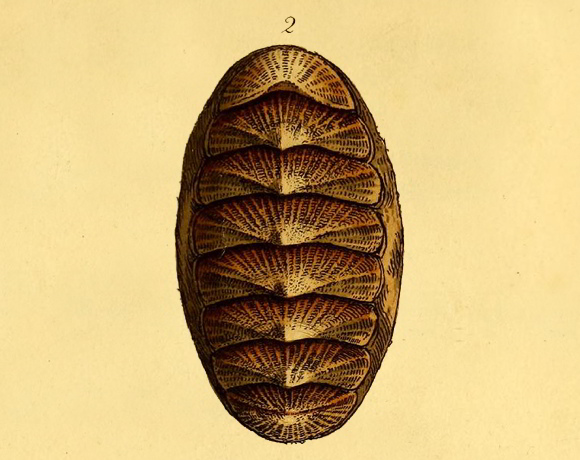
« The middle valves, in this shell, are marked on the dorsal triangles with numerous whitish lines occasionally running into each other. These striae, when magnified appear moniliform, or like strings of minute white beads ; the marginal triangles are also striated but not beaded. The extreme valves are marked like the middle ones. General colour fawn or tawny, perfect shells deepest on the back, worn shells white at the apex of each valve. »
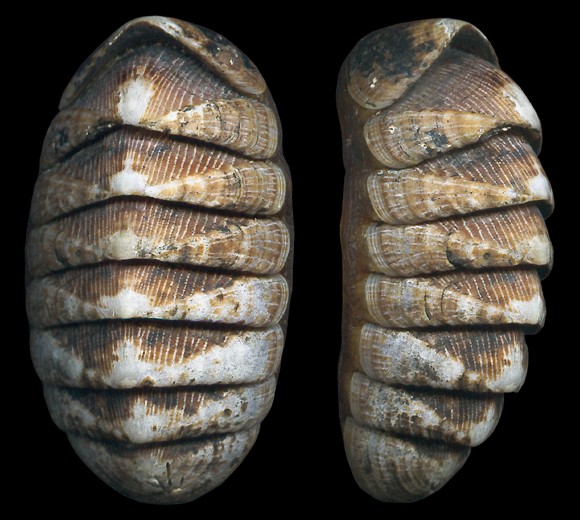
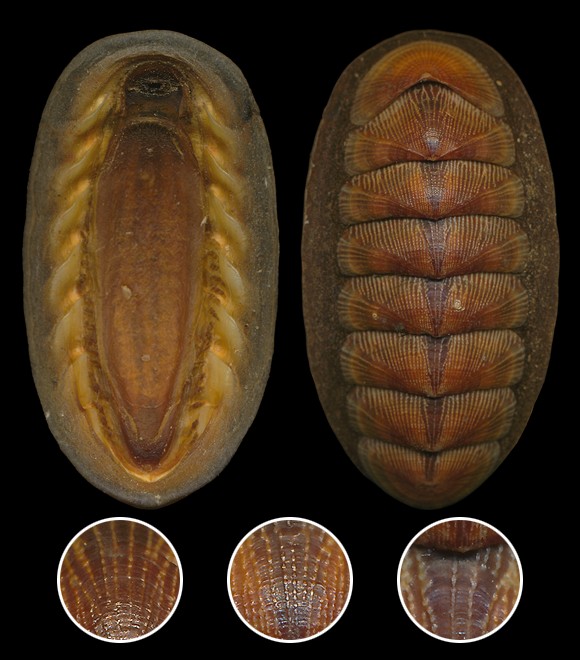
collected at night, crawling on mud flats near sea grass beds, Ilha de Faro. 46mm.
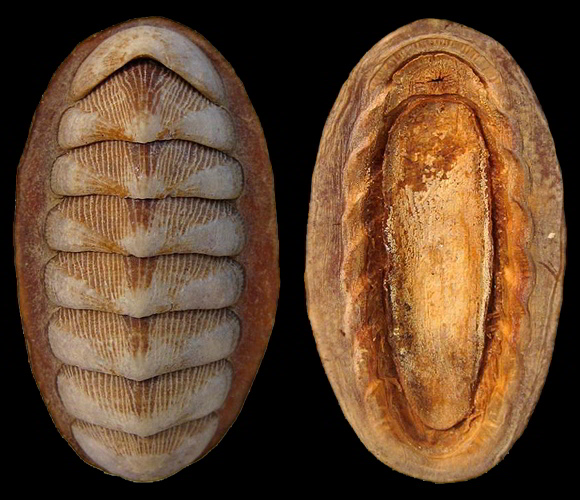
Original pictures provided by A. Nappo (IT).
– (CC BY-NC-SA) –
